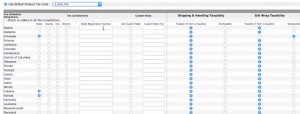 In 2010, Simon Sinek’s TED talk about the Golden Circle of marketing took intellectuals and business-minded Internet audiences by storm. Labeled like something out of Greek mythology and sounding at first like holistic cutesy talk, the Golden Circle is actually grounded in specific behavioral science, and it quickly transfixed audiences. Sinek’s theory illustrates an approach to marketing that stems from the why as opposed to the what; in short, companies that appeal to our gut reactions are more successful than those that attempt to influence our decision making by telling us about their products. Consumers are more swayed by why a company / activist / organization does what it does than by what it actually does. The “gut reaction” function of the brain affects decision making far more effectively than rationalization does.
In 2010, Simon Sinek’s TED talk about the Golden Circle of marketing took intellectuals and business-minded Internet audiences by storm. Labeled like something out of Greek mythology and sounding at first like holistic cutesy talk, the Golden Circle is actually grounded in specific behavioral science, and it quickly transfixed audiences. Sinek’s theory illustrates an approach to marketing that stems from the why as opposed to the what; in short, companies that appeal to our gut reactions are more successful than those that attempt to influence our decision making by telling us about their products. Consumers are more swayed by why a company / activist / organization does what it does than by what it actually does. The “gut reaction” function of the brain affects decision making far more effectively than rationalization does.
Now apply this to online marketing. Think about what gut reaction your company’s website may trigger. Researchers at the content marketing super-site Hubspot found that users judge the appearance of a website in 1/50th to 1/20th of a second. The concept of website optimization is nothing new, but it is still largely underestimated or underemployed by myriads of businesses and not-for-profit organizations alike. Simple website analysis reveals that the most effectively optimized websites are those that follow the Golden Circle. They convince by relaying why the company does what it does. Their aesthetics trigger an instant positive reaction from visitors, and easy navigation and well-designed landing pages enable the swift conversion of why-inspired visitors.
Don’t be afraid to learn from your competitors. Here are a few examples of companies and organizations that have got this website optimization thing down.
1. Gumption Inc.
Perhaps even more than corporations, not-for-profit organizations depend on sharing their beliefs with viewers and inspiring them to follow. Gumption Inc. is a Canadian organization that unites care for the environment, the economy, and community health into a single vision. The extent of its optimization practices is really seen as you navigate through the website, but the modern homepage is a good place to start.

- Edgy yet inviting brand identity
- Clean design and custom photos
- Easy navigation (Note how the eye follows the model’s arms conveniently up to the “donate” button. Not sure it was intentional, but effective nonetheless!)
- Consistent banner on every page
2. Coin
The brilliance of Coin’s website happens as you scroll down. Granted, some visitors won’t bother to do so, but the overall spectacular design and eye-catching (without being distracting or obnoxious) animations encourage users to continue down the page. From there, this website truly embraces the Golden Circle method for website optimization. The best part? The call to action (CTA) of “Get Yours First” that allows newly convinced consumers to believe they’re jumping on board ahead of the crowd.
- Changing custom background to target different user personalities
- Visually interesting, interactive experience
- Explains benefits and relates the product to real-life situations
- CTAs at both the top and bottom of the page
- Stellar CTA statement
3. ZURB
Simple, beautiful, and to the point, ZURB’s homepage lets you know who they are as a company and utilizes a truly brilliant CTA. In addition to its perfect use of color and design, “ZURB in 30 Seconds” is hard to pass up; who wouldn’t want all their questions answered in half a minute?

- Phenomenal CTA
- Direct message about who they are and what users have to gain
- Easy navigation (as you scroll down) that provides clear answers to user questions
4. Panera Bread (mobile)
Most online consumers have experienced trying to access a website from a mobile device, only to discover awkward layouts, teeny-tiny fonts, and agonizingly slow load times. The reaction? An immediate backward swipe, especially when expensive data usage is at stake. Websites like Panera Bread, which employs unique optimization for both desktop and mobile devices, are very much ahead of the game. Panera Bread’s mobile site is attractive, functional, and—most importantly—user-friendly on a small screen.
- Large, clear, easy-to-use navigation
- Simple, attractive aesthetics
- Designed to immediately meet user needs
- Shareable on social media
5. YouNeedaBudget
Think about what a user probably asked Google: “How can I balance my budget?” comes to mind. You Need a Budget presents immediate answers to that and similar questions, minimizing user effort (crucial in today’s online culture of instant gratification).

- Several clear, relevant CTAs
- Talks about user benefits rather than products
- Demonstrates the company’s driving beliefs to encourage trust
- Visible free-product offer
Conclusion
When optimizing your website, remember the Golden Circle—demonstrate that your company is genuine, believes in what it does, and offers a great product. Trigger positive gut reactions from visitors by making your website a delight to look at and easy to navigate, and transform those same visitors into customers or donors with easy-to-find, direct, and inviting CTAs. Remember that first reactions to your website and user friendliness will do a huge chunk of your sales pitch for you. Once that gut instinct happens, visitors can use the additional pages of your informative, well-laid-out website to rationalize the affirmative decision they’ve already made.
(298)
Report Post







